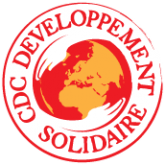Summary of the Rapcha project
Five earthquake-resistant houses have been built in the village of Rapcha in Nepal, in two phases (winter 2020 and winter 2021), on budget and on schedule, despite the uncertainties and constraints associated with the health crisis.
A sixth house, initially intended for a family that has since benefited from local aid, was not built, but as a replacement, the mayor wisely proposed supporting the village’s agricultural development for the benefit of the entire community. The construction of a new water mill to process local cereals thus helped to reinforce the economic objective of this project.
Training in earthquake-resistant construction techniques was provided by the head carpenter and the head mason for around fifteen construction workers. The work sites were organised and supervised by Yadav and Jase, our local correspondents, who were themselves trained in 2017 by a technician from our association.
The objective of transferring skills to local craftsmen has been achieved with satisfaction. Using local materials (wood and stone), these reproducible constructions are also part of a sustainable development approach.
In addition, taking into account the exceptional situation of these two years marked by a slowdown in activities, it should be emphasised in this report that the payment of salaries to the site workers has contributed to fuelling a financial circuit in a fragile subsistence economy penalised by the absence of work on the treks during this period and the limited trade in agricultural products.
In conclusion, the construction of these houses and water mill meets the three objectives set out in the project and is in line with the United Nations’ sustainable development objectives:
- decent housing (SDG 11),
- vocational training (MDG 4)
- and local development (MDG 12).
To our great regret, all attempts to organise an on-site mission during this period were unsuccessful, but a project has been announced for March 2022.
Our association ANUVAM warmly thanks the “CDC développement solidaire” for its support, as well as our local correspondents who were very efficient in directing the workcamps, providing accounting information and photographs, and passing on to us the thanks of the community of this Nepalese village.


